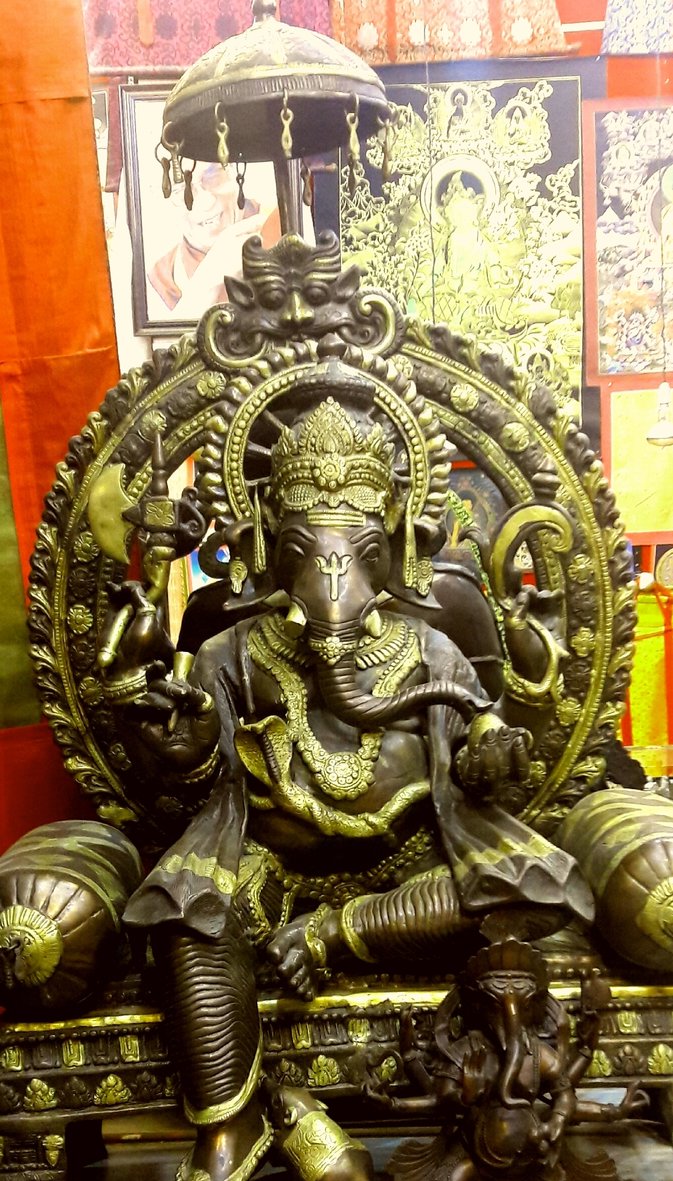The Elephant in the Room – Symbolism of Ganesha
*
We’ve all seen the figurines and intricately detailed tapestries, paintings, and models colorfully depicting this four-armed elephantine deity, but what does Ganesha really symbolise?
Considered in the Hindu religion to be remover of obstacles, patron of the arts and sciences, and the master of intellect and wisdom, there are many more attributes associated with this deity than may initially meet the eye. As is the case with many externally or physically expressed forms of Hindu deities, Ganesha’s presence is laden with symbolism and meanings which are all ultimately intended to depict and express not only enlightenment and personal fulfillment, but also a means of obtaining it for oneself.
With a lineage that dates back to the 4th and 5th century AD, there are several theories as to where and how Ganesha was first born, how he gained his elephant or ‘gaja’ head, and the third predominant focal point of his single tusk. The stories behind these three dominant life events are expressed in the form of mythological fables, and vary in their length and detail. However vague the finer details, it is certain that Ganesha was born of the Hindu Gods Shiva and Parvati, and that for a brief period a particularly devout strain of followers emerged who identified themselves as the Ganapatya, believing Ganesha to be the one supreme God.
According to Kundalini yoga, Ganesha resides within the first (Root) chakra, and embodies the energy of transformation required to initiate change, transformation, and the overcoming of obstacles or pending issues. A great way to inspire yourself to push through a difficult flow or daily task, this root energy from the Muladhara (root chakra) helps us move through the remaining chakras with ease and easily access our intuition, making Ganesha a vital element in the path to self-discovery and enlightenment.
It is an attitude of perseverance, strength, and sustainability that is suggested by Ganesha’s presence, yet also that of an equilibrium and balance between force and kindness. This balance between extremes and the awareness to maintain a steady yet soft outlook on life suggests the yogic principals of Sthira and Sukha, which aim to cultivate stability, and a certain level of ease within that stability. For this reason, Ganesha is also often the deity most associated with well-wishes and embarking on new ventures – many Indian and Hindu people will place a statue in a new home before entering, and kirtan or chanting sessions regularly devote their practice to Ganesha in an attempt to stimulate positive and strengthening energies initiating from the root chakra.
The four arms of Ganesha are also depicted holding items of symbolic meaning – the “Pasa’, to symbolize the importance of restraining the ego and balancing passions; the ‘Modaka’, to symbolise the sweet rewards of the spiritual life; the “Ankusha’, to symbolize the motivation to escape inertia, and also a mudra of protection. These four limbs can be related also to yoga and the importance of avoiding excesses in life.
An ultimate symbol of continuity and self-sufficient stability, it’s easy to see how Ganesha has remained a solid figurehead within both yogic and religious practices through the ages. By stimulating the root chakra, Ganesha helps us to work through issues steadily and with full-awareness, remaining grounded, soft, and steady throughout our practice and daily lives.


